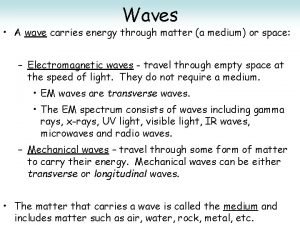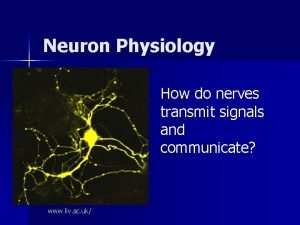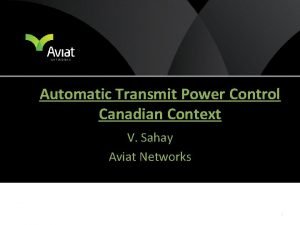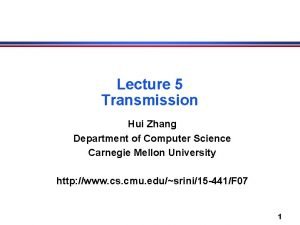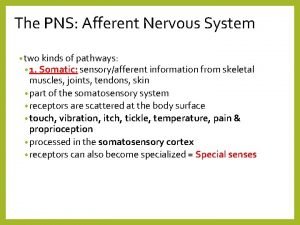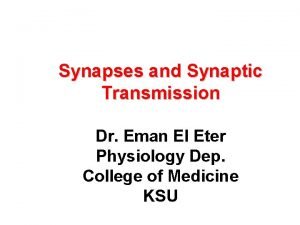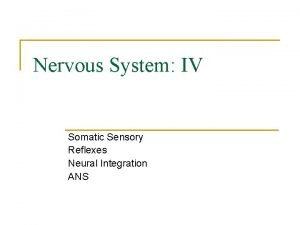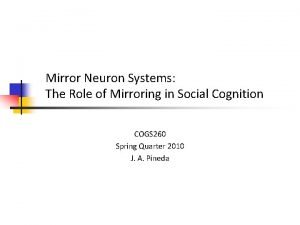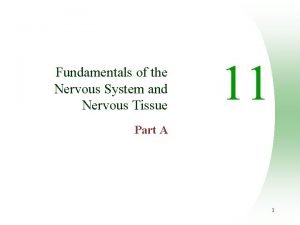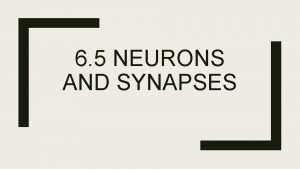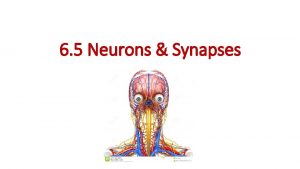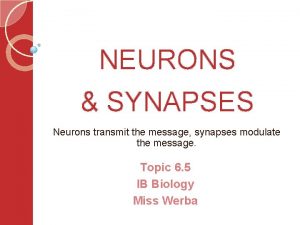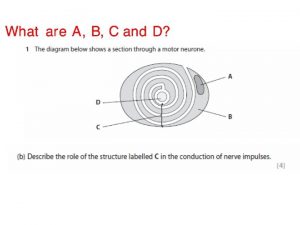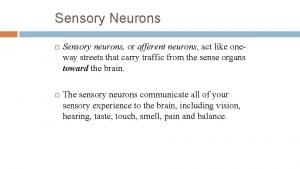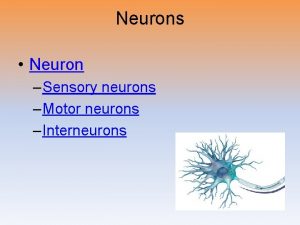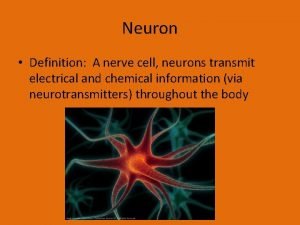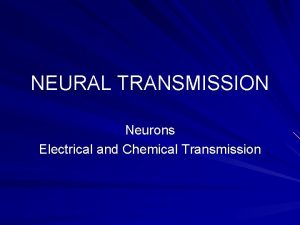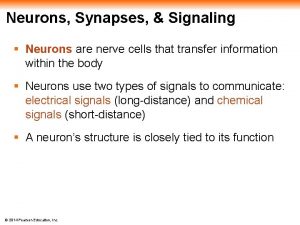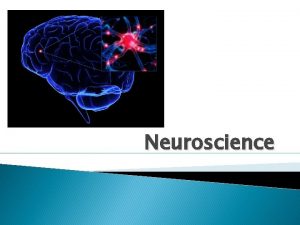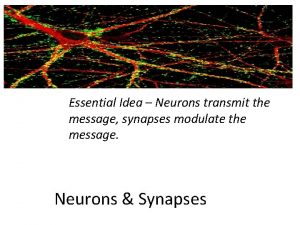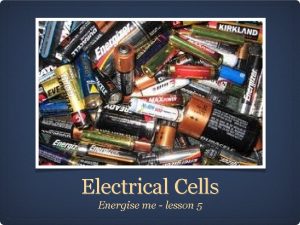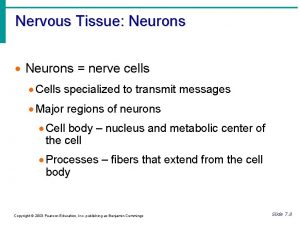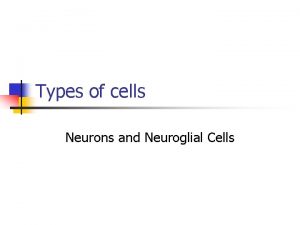Key Concepts Neurons are cells that transmit electrical



















































- Slides: 51

Key Concepts Neurons are cells that transmit electrical signals used in communication. Their plasma membranes carry a voltage, called a membrane potential, due to differences in the concentrations of ions on the inner and outer surfaces. Action potentials are all-or-none changes in membrane potential that serve as electrical signals. During an action potential, an inflow of sodium ions is followed by an outflow of potassium ions. © 2011 Pearson Education, Inc.

Key Concepts At synapses, the electrical signal from a neuron triggers the release of a chemical signal—a neurotransmitter. When the neurotransmitter arrives at an adjacent neuron, there is a change in that cell’s membrane potential. Most animals have a central nervous system (CNS) and a peripheral nervous system (PNS). PNS neurons receive sensory information and transmit it to the CNS for processing. The CNS then sends signals to muscles, glands, or other tissues via PNS neurons. © 2011 Pearson Education, Inc.

Principles of Electrical Signaling • Neurons transmit electrical signals; muscles can respond to electrical signals by contracting. • There are two basic types of nervous systems: 1. The diffuse arrangement of cells called a nerve net, found in cnidarians (jellyfish, hydra, anemones) and ctenophores (comb jellies). 2. A central nervous system (CNS) that includes large numbers of neurons aggregated into clusters called ganglia. © 2011 Pearson Education, Inc.

Types of Neurons in the Nervous System • Sensory receptors in the skin, eyes, ears, and nose transmit streams of data about the external environment. Sensory cells inside the body monitor conditions that are important in homeostasis, such as blood p. H and oxygen levels. • A sensory receptor transmits the information it receives from the environment by means of a nerve cell called a sensory neuron. © 2011 Pearson Education, Inc.

Types of Neurons in the Nervous System • In vertebrates, the sensory neuron sends the information to neurons in the spinal cord or brain via nerves—long, tough strands of nervous tissue containing thousands of neurons. • The central nervous system (CNS), made up of the brain and spinal cord, integrates information from many sensory neurons. • Cells in the CNS called interneurons make connections between sensory neurons and motor neurons, which are nerve cells that send signals to effector (response) cells in glands or muscles. • All of the components of the nervous system outside the CNS are part of the peripheral nervous system (PNS). © 2011 Pearson Education, Inc.

The Anatomy of a Neuron • Most neurons have the same three parts: 1. A dendrite receives electrical signals from the axons of adjacent cells. 2. The cell body, or soma, which includes the nucleus, integrates the incoming signals and generates an outgoing signal. 3. The axon then sends the signal to the dendrites of other neurons. • Each neuron makes many connections with other neurons. © 2011 Pearson Education, Inc.

© 2011 Pearson Education, Inc.

An Introduction to Membrane Potentials • A difference of electrical charge between any two points creates a difference in electrical potential, or a voltage. If the positive and negative charges on ions that exist on the two sides of a plasma membrane do not balance each other, the membrane will have an electrical potential. • When an electrical potential exists on either side of a plasma membrane, the separation of charges is called a membrane potential, also known as action potential. © 2011 Pearson Education, Inc.

Electrical Potential, Currents, and Gradients • When a membrane potential exists, the ions on both sides of the membrane have potential energy. • If the membrane were removed, ions would spontaneously move from the area of like charge to the area of unlike charge—causing a flow of charge, called an electric current. • Ions move across membranes in response to concentration gradients as well as charge gradients. – The combination of an electric gradient and a concentration gradient is an electrochemical gradient. © 2011 Pearson Education, Inc.

How Is the Resting Potential Maintained? • When a neuron is at rest in extracellular fluid, its membrane has a voltage called the resting potential. • This potential exists in part because neurons have a high intracellular concentration of K+ and low intracellular concentrations of Na+ and Cl–. © 2011 Pearson Education, Inc.

How Is the Resting Potential Maintained? • The plasma membrane is selectively permeable; only certain substances can cross it. • Ions such as these can only cross plasma membranes efficiently in one of three ways: 1. Along their electrochemical gradient through an ion channel, a pore in the membrane that allows only specific ions to pass through. 2. Carried via a membrane cotransporter protein or antiporter protein. 3. Pumped against an electrochemical gradient by a membrane protein that hydrolyzes ATP. © 2011 Pearson Education, Inc.

The Role of the Na+/K+-ATPase • Na+/K+-ATPase imports K+ ions and exports Na+ ions, resulting in the concentration of K+ ions being higher inside the cell and Na+ being higher outside the cell. • This results in the inside of the neuron being negatively charged with respect to the extracellular environment. Thus, the neuron has a negative resting potential. • The resting potential represents energy stored as concentration gradients in a series of ions. © 2011 Pearson Education, Inc.

© 2011 Pearson Education, Inc.

Using Microelectrodes to Measure Membrane Potentials • In the 1930 s, A. L. Hodgkin and Andrew Huxley helped pioneer the study of electrical signaling in animals. • They studied the squid axon because it is so large. • They were able to record the axon’s resting potential and document that it can be disrupted by an event called the action potential. © 2011 Pearson Education, Inc.

What Is an Action Potential? • An action potential is a rapid, temporary change in a membrane potential. • Although Hodgkin and Huxley initially studied it in the squid giant axon, subsequent work has shown that the action potential has the same general characteristics in all species and in all types of neurons. • It has three phases: depolarization, repolarization, and hyperpolarization. © 2011 Pearson Education, Inc.

A Three-Phase Signal 1. The initial event is a rapid depolarization of the membrane. – For an action potential to begin, the membrane potential must shift from its resting potential to about – 55 m. V. – If this threshold potential is reached, certain channels in the axon membrane open and ions rush into the axon, following their electrochemical gradients. – This current flow causes further depolarization. © 2011 Pearson Education, Inc.

A Three-Phase Signal 2. The second phase is a rapid repolarization. – When the membrane potential reaches about +40 m. V, an abrupt change is triggered by the closing of certain ion channels and the opening of other ion channels in the membrane. – During this phase, ions flow out of the axon, changing the membrane potential from positive back to negative. © 2011 Pearson Education, Inc.

A Three-Phase Signal 3. The third phase is hyperpolarization. – The repolarization event results in the membrane briefly becoming more negative than the resting potential, a state called hyperpolarization. © 2011 Pearson Education, Inc.

© 2011 Pearson Education, Inc.

A Three-Phase Signal • All three phases of an action potential occur in about a millisecond. • An action potential occurs because specific ion channels in the plasma membrane open or close in response to changes in voltage. An action potential always has the same three-phase form, even though the size of the resting potential, threshold potential, and peak depolarization may vary among species. © 2011 Pearson Education, Inc.

Dissecting the Action Potential • Which ions are involved in the currents that form the action potential? Experiments showed that the action potential consists of a strong inward flow of sodium ions followed by a strong outward flow of potassium ions. © 2011 Pearson Education, Inc.

How Do Voltage-Gated Channels Work? • Voltage-gated channels are ion channels that open and close in response to changes in membrane voltage. • The shape of a voltage-gated channel, and thus its ability to admit ions, changes in response to the charges present at the membrane surface. • Hodgkin and Huxley confirmed that voltage-gated channels exist using a technique called voltage clamping, which allows researchers to hold an axon at any voltage and record the electrical currents that occur. © 2011 Pearson Education, Inc.

© 2011 Pearson Education, Inc.

Identifying Channels and Dissecting Currents • Neurotoxins—poisons that affect neuron function—have been used to explore the dynamics of voltage-gated channels. • For example, applying the tetrodotoxin found in puffer fish to a neuron prevented action potentials, but did not affect the resting potential. – Researchers concluded that the toxin specifically blocks the voltage-gated Na+ channel, probably by binding to a specific site on the channel protein. – Brevetoxins (Karenia brevis dinoflagellate produces). Causes NSP (neurotoxic shellfish poisoning) by toxin magnification in shellphish over time. © 2011 Pearson Education, Inc.

How Is the Action Potential Propagated? 1. When Na+ enters a cell at the onset of an action potential, positive charges in the cell are repulsed and negative charges are attracted. This results in the charge spreading away from the sodium channels. 2. As positive charges are pushed farther from the initial sodium channels, they depolarize adjacent portions of the membrane. 3. Nearby voltage-gated Na+ channels pop open in response to depolarization. Positive feedback occurs, and a full-fledged action potential results. © 2011 Pearson Education, Inc.

How Is the Action Potential Propagated? • In this way, an action potential is continuously regenerated as it moves down the axon. The signal does not diminish as it moves, because the response is all or none. • Action potentials do not propagate back up the axon because Na+ channels are refractory—once they have opened and closed, they are less likely to open again for a short period of time. • Sodium channels “downstream” of the site are not in the refractory state, resulting in the one-way propagation of the action potential. © 2011 Pearson Education, Inc.

© 2011 Pearson Education, Inc.

Axon Diameter Affects Speed • Compared to small axons, large axons have relatively few sodium channels per unit of membrane surface. • As a result, less current leaks back out of a large axon than a small axon, and the charge spreads farther down the membrane. • Large diameter neurons thus transmit action potentials much faster than small axons can. © 2011 Pearson Education, Inc.

Myelination Affects Speed • Analyzing charge spread helps to explain the phenomenon of nerve myelination. • In vertebrate neurons, the membranes of specialized accessory cells (called Schwann cells in the PNS and oligodendrocytes in the CNS) are wrapped around axons. – These accessory cells are collectively called glia. • Where glia wrap around an axon, they form a myelin sheath that acts as electrical insulation, preventing charge in the form of ions from leaking out as it spreads down an axon. © 2011 Pearson Education, Inc.

Myelination Affects Speed • The influx of charge that results from an action potential spreads unimpeded until it hits an unmyelinated section of the axon, called a node of Ranvier. • The node has a dense concentration of voltage-gated Na+ channels so action potentials can occur. • In this way, electrical signals jump down the myelinated axon much faster than they could down an unmyelinated one. © 2011 Pearson Education, Inc.

© 2011 Pearson Education, Inc.

Myelination Affects Speed • Myelination is interpreted as an adaptation that makes rapid transmission of electrical signals possible in axons that have a small diameter. • If myelin degenerates, the transmission of electrical signals slows considerably. • The disease multiple sclerosis (MS) develops as damage to myelin increases and electrical signaling is impaired, causing the muscles to weaken and coordination to lessen. © 2011 Pearson Education, Inc.

Synapse Structure and Neurotransmitter Release • The interface between two neurons is called a synapse. Just inside the synapse, the axon contains synaptic vesicles that store neurotransmitters. • The sending cell is called the presynaptic neuron, and the receiving cell is called the postsynaptic neuron. © 2011 Pearson Education, Inc.

© 2011 Pearson Education, Inc.

The Model of Synaptic Transmission 1. The action potential arrives at the end of the axon. 2. This triggers the entry of calcium ions into the presynaptic cell. 3. In response, synaptic vesicles fuse with the presynaptic membrane, then release neurotransmitter into the synaptic cleft— the gap between the cells. 4. Neurotransmitters bind to receptors on the postsynaptic membrane, initiating an action potential if the threshold potential is reached. 5. The response ends as the neurotransmitter is broken down and taken back up by the presynaptic cell. © 2011 Pearson Education, Inc.

© 2011 Pearson Education, Inc.

What Do Neurotransmitters Do? • To qualify as a neurotransmitter, a molecule must: – Be present at the synapse and released in response to an action potential. – Bind to a receptor on a postsynaptic cell. – Be taken up or degraded. • Research has characterized a wide array of neurotransmitters and receptors. © 2011 Pearson Education, Inc.

© 2011 Pearson Education, Inc.

Postsynaptic Potentials • Synapses can be one of two general types, either leading to depolarization or hyperpolarization of the membrane. • Excitatory postsynaptic potentials (EPSPs) cause the membrane to depolarize, increasing the likelihood of an action potential. • Inhibitory postsynaptic potentials (IPSPs) cause the membrane to be hyperpolarized, decreasing the likelihood of an action potential. • Synapses can also be modulatory―meaning they modify a neuron’s response to other EPSPs or IPSPs. © 2011 Pearson Education, Inc.

© 2011 Pearson Education, Inc.

Postsynaptic Potentials Are Graded • EPSPs and IPSPs are not all-or-none events but are graded in size. • The size of an EPSP or IPSP depends on the amount of neurotransmitter that is released at the synapse. • Both types of signal are short lived because neurotransmitters do not bind irreversibly to channels in the postsynaptic cell. © 2011 Pearson Education, Inc.

Summation and Threshold • If several EPSPs occur close together, they sum and make the neuron likely to fire an action potential. – The additive nature of EPSPs and IPSPs is called summation. • The sodium channels that trigger action potentials in the postsynaptic cell are located at the axon hillock. • Charges spread to the axon hillock, and if the membrane here depolarizes past the threshold potential, an action potential begins and is propagated down the axon to the next synapse. © 2011 Pearson Education, Inc.

© 2011 Pearson Education, Inc.

Summation and Threshold • Summation is critical because it determines whether an action potential begins in the postsynaptic cell. • Because neurons receive input from many synapses and because EPSPs and IPSPs sum, information in the form of electrical signals is modified at the synapse before being passed along. © 2011 Pearson Education, Inc.

What Does the Peripheral Nervous System Do? • The peripheral nervous system (PNS) is made up of neurons outside the CNS. • The PNS consists of two systems with distinct functions: 1. The afferent division transmits sensory information to the CNS. 2. The efferent division carries commands from the CNS to the body. © 2011 Pearson Education, Inc.

What Does the Peripheral Nervous System Do? • Neurons in the afferent division monitor conditions inside and outside the body. Once information from afferent neurons has been processed in the CNS, neurons in the efferent division carry signals that allow the body to respond to changed conditions in an appropriate way. • The afferent and efferent divisions carry out sensory and motor functions, respectively. © 2011 Pearson Education, Inc.

What Does the Peripheral Nervous System Do? • The efferent division is divided into two systems: 1. The somatic system controls movement—it carries out voluntary responses, which are under conscious control, with skeletal muscles serving as the effectors. 2. The autonomic system controls internal processes—it carries out involuntary responses, which are not under conscious control, with smooth muscle, cardiac muscle, and several glands serving as the effectors. © 2011 Pearson Education, Inc.

© 2011 Pearson Education, Inc.

What Does the Peripheral Nervous System Do? • In effect, the somatic system responds to external stimuli and governs behavior, while the autonomic system responds to internal stimuli and controls the activity of internal organs and glands. • The autonomic system is further divided into two divisions: 1. The parasympathetic nervous system promotes relaxation or digestion. 2. The sympathetic nervous system prepares organs for stressful situations. © 2011 Pearson Education, Inc.

© 2011 Pearson Education, Inc.

Functional Anatomy of the CNS • The spinal cord, which is made up of many nerves, serves as an information conduit. • Virtually all the information that travels to or from the spinal cord is sent to the brain for processing. • The brain consists of four structures: the cerebrum, the cerebellum, the diencephalon, and the brain stem. © 2011 Pearson Education, Inc.
 Mikael ferm
Mikael ferm Phân độ lown ngoại tâm thu
Phân độ lown ngoại tâm thu Block xoang nhĩ ecg
Block xoang nhĩ ecg Thơ thất ngôn tứ tuyệt đường luật
Thơ thất ngôn tứ tuyệt đường luật Thơ thất ngôn tứ tuyệt đường luật
Thơ thất ngôn tứ tuyệt đường luật Chiến lược kinh doanh quốc tế của walmart
Chiến lược kinh doanh quốc tế của walmart Tìm vết của mặt phẳng
Tìm vết của mặt phẳng Hãy nói thật ít để làm được nhiều
Hãy nói thật ít để làm được nhiều Tôn thất thuyết là ai
Tôn thất thuyết là ai Gây tê cơ vuông thắt lưng
Gây tê cơ vuông thắt lưng Sau thất bại ở hồ điển triệt
Sau thất bại ở hồ điển triệt Paranasal sinus development
Paranasal sinus development Tubular lumen
Tubular lumen Thyroid gland
Thyroid gland Somatic vs gamete
Somatic vs gamete Why dna is more stable than rna?
Why dna is more stable than rna? Chlorocruorin
Chlorocruorin Prokaryotic vs eukaryotic
Prokaryotic vs eukaryotic Animal rights and animal welfare venn diagram
Animal rights and animal welfare venn diagram Prokaryotic cell
Prokaryotic cell Organelle trail
Organelle trail Masses of cells form and steal nutrients from healthy cells
Masses of cells form and steal nutrients from healthy cells Label
Label Cuál es la diferencia entre la célula animal y vegetal
Cuál es la diferencia entre la célula animal y vegetal Is a red blood cell prokaryotic or eukaryotic
Is a red blood cell prokaryotic or eukaryotic Nondisjunction in meiosis
Nondisjunction in meiosis Cell substance
Cell substance The giver introduction
The giver introduction Stores hereditary information
Stores hereditary information Transmit diversity in lte
Transmit diversity in lte Type of wave
Type of wave How do nerves transmit signals
How do nerves transmit signals Ce este dialogul
Ce este dialogul Automatic transmit power control
Automatic transmit power control Transmit waves
Transmit waves Mechanical waves vs electromagnetic waves venn diagram
Mechanical waves vs electromagnetic waves venn diagram Transmit light
Transmit light Hui transmit data
Hui transmit data Virtual neurons
Virtual neurons Cutaneous mechanoreceptors
Cutaneous mechanoreceptors Homunculus
Homunculus 1st order 2nd order 3rd order neurons
1st order 2nd order 3rd order neurons Convergence vs divergence neurons
Convergence vs divergence neurons Input neurons
Input neurons Somatic motor cortex
Somatic motor cortex Alpha and gamma motor neurons
Alpha and gamma motor neurons Location of sensory neurons
Location of sensory neurons Mirror neurons location
Mirror neurons location Input neurons
Input neurons Identify each type of neuronal pool
Identify each type of neuronal pool First second and third order neurons
First second and third order neurons Fourth order neurons
Fourth order neurons






























